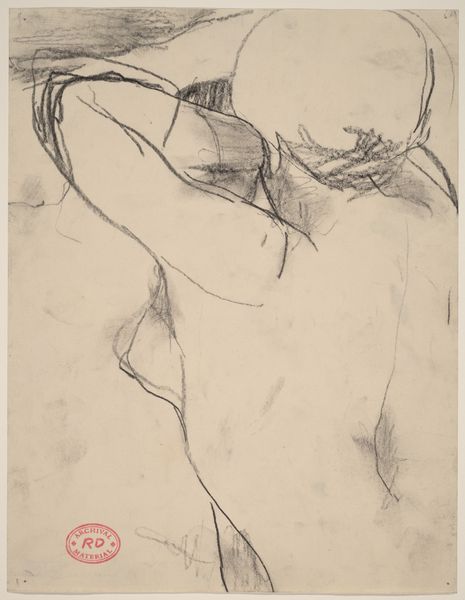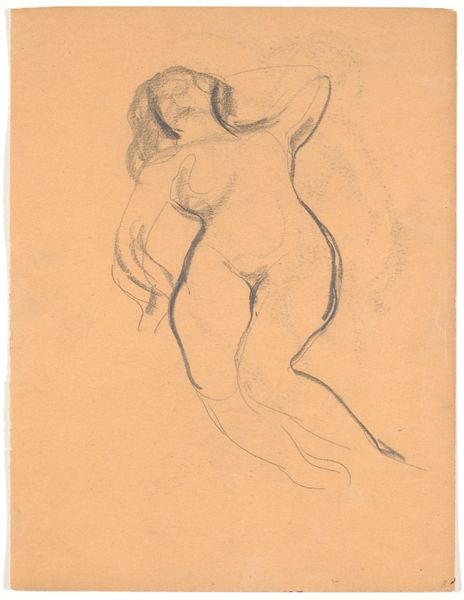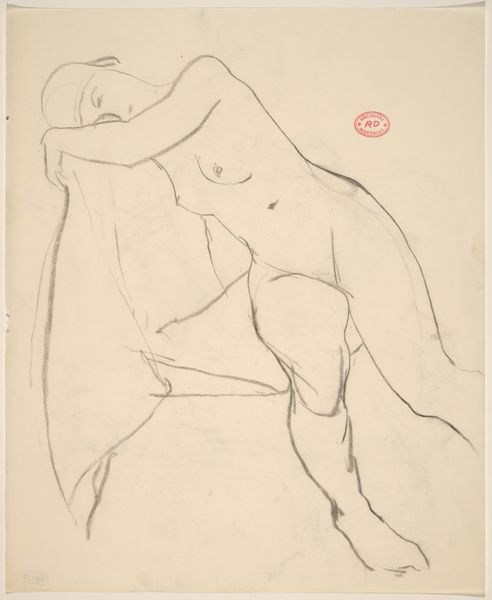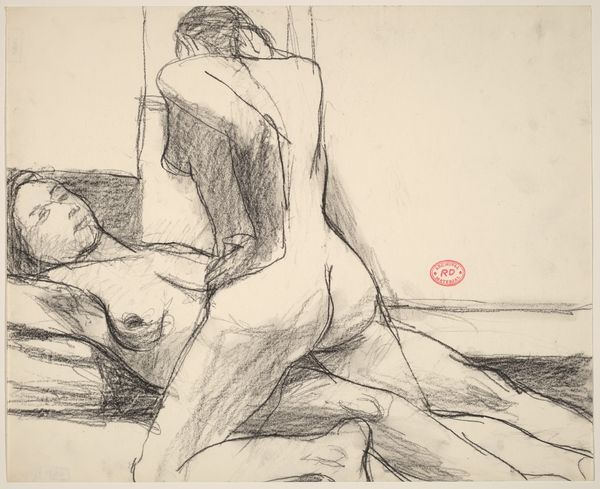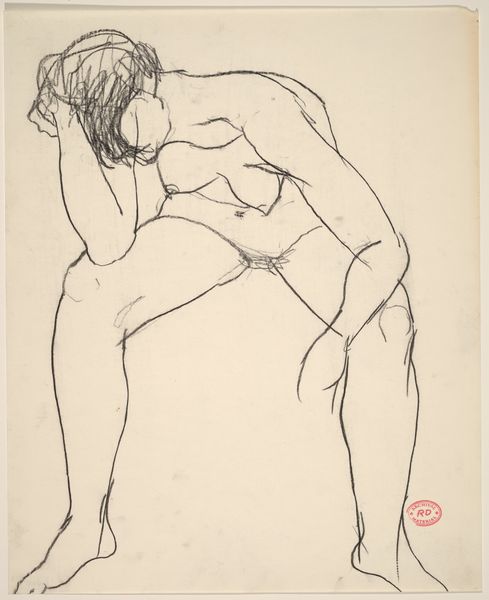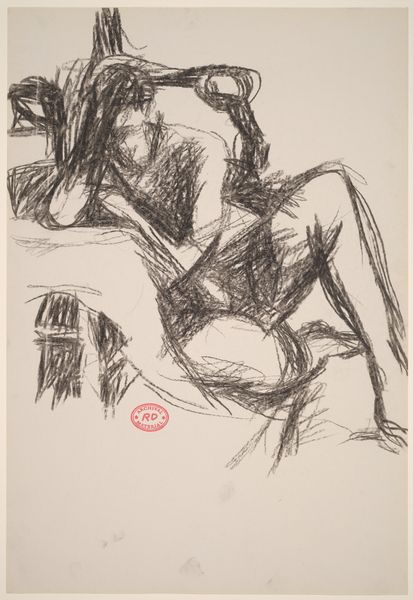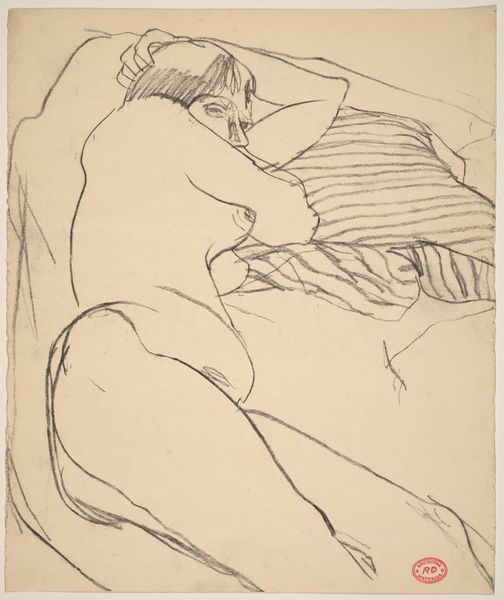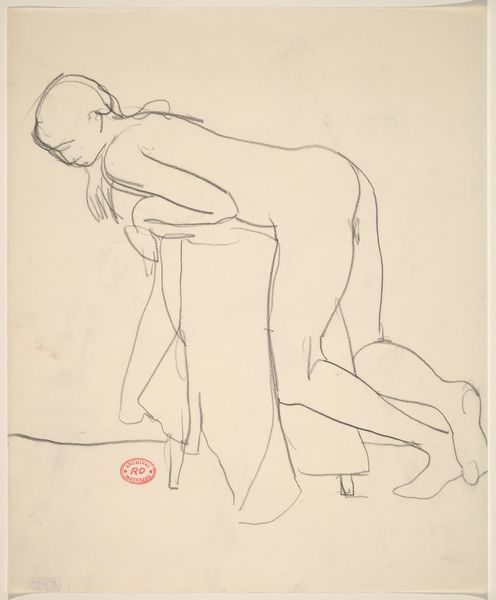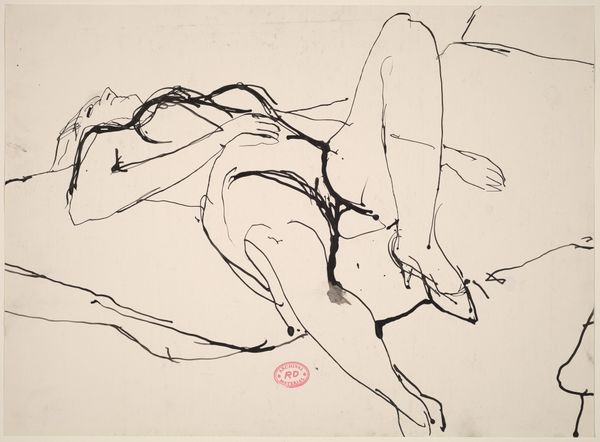![Untitled [two female nudes reclining in an embrace] by Richard Diebenkorn](/_next/image?url=https%3A%2F%2Fd2w8kbdekdi1gv.cloudfront.net%2FeyJidWNrZXQiOiAiYXJ0ZXJhLWltYWdlcy1idWNrZXQiLCAia2V5IjogImFydHdvcmtzL2ZiZGVmODE0LWJiMjAtNGNlNS1hMWYxLTE1NWZjMjlmNDk2YS9mYmRlZjgxNC1iYjIwLTRjZTUtYTFmMS0xNTVmYzI5ZjQ5NmFfZnVsbC5qcGciLCAiZWRpdHMiOiB7InJlc2l6ZSI6IHsid2lkdGgiOiAxOTIwLCAiaGVpZ2h0IjogMTkyMCwgImZpdCI6ICJpbnNpZGUifX19&w=3840&q=75)
Untitled [two female nudes reclining in an embrace] 1955 - 1967
0:00
0:00
drawing, pencil
#
drawing
#
pencil sketch
#
figuration
#
bay-area-figurative-movement
#
pencil
#
nude
#
realism
Dimensions: overall: 43.2 x 35.6 cm (17 x 14 in.)
Copyright: National Gallery of Art: CC0 1.0
Curator: We're looking at an untitled pencil drawing by Richard Diebenkorn, likely created between 1955 and 1967, depicting two reclining female nudes. Curator: My initial thought? It’s a very intimate scene. The intertwined figures create this sense of shared space, vulnerability. It challenges the typical male gaze often associated with nude art. Curator: Agreed, the intimacy is palpable, achieved through Diebenkorn's economical use of line. Note the confident strokes defining the figures, juxtaposed with areas of lighter shading, creating depth and volume. The composition directs our gaze across the bodies in a fluid motion. Curator: Exactly. And thinking about the time, mid-century America, depicting female intimacy like this, outside the bounds of a heterosexual relationship – if that's indeed what's being implied here – could be read as quietly subversive, a subtle assertion of female autonomy and desire. Curator: One could also consider how the visible pencil strokes contribute to a sense of immediacy and rawness. The lack of finish emphasizes the act of creation itself. Diebenkorn isn't aiming for idealized beauty but rather exploring the formal qualities of the human form. Curator: Yet, the "rawness" also opens it to interpretation. Are these figures comfortable? Confined? The embrace, is it consensual, affectionate, or perhaps indicative of something else, particularly for women navigating societal constraints. How much control did women have of their own sexuality and intimacy then? Curator: Perhaps focusing on these narrative speculations risks overlooking the inherent visual language of the work. The strong diagonals, the play of positive and negative space… These formal elements speak volumes, irrespective of any specific social narrative. Curator: I’d counter that by arguing that divorcing art from its context sanitizes it. Art is never created in a vacuum; it responds to and shapes the world around it. Ignoring the historical and social dimensions limits our comprehension and impact on how we understand such work today. Curator: I see your point. Still, analyzing the composition reveals that his use of implied line encourages a deeper reading. Overall it transcends specificity, focusing on universal aesthetic principles. Curator: It's a striking piece on multiple levels. Its very ambiguity is where its strength resides. The intimacy, whether chosen or otherwise, lingers. Curator: Ultimately, Diebenkorn's drawing presents a masterclass in capturing human form, using basic materials with great technical skill, revealing a rich composition and beautiful form.
Comments
No comments
Be the first to comment and join the conversation on the ultimate creative platform.


